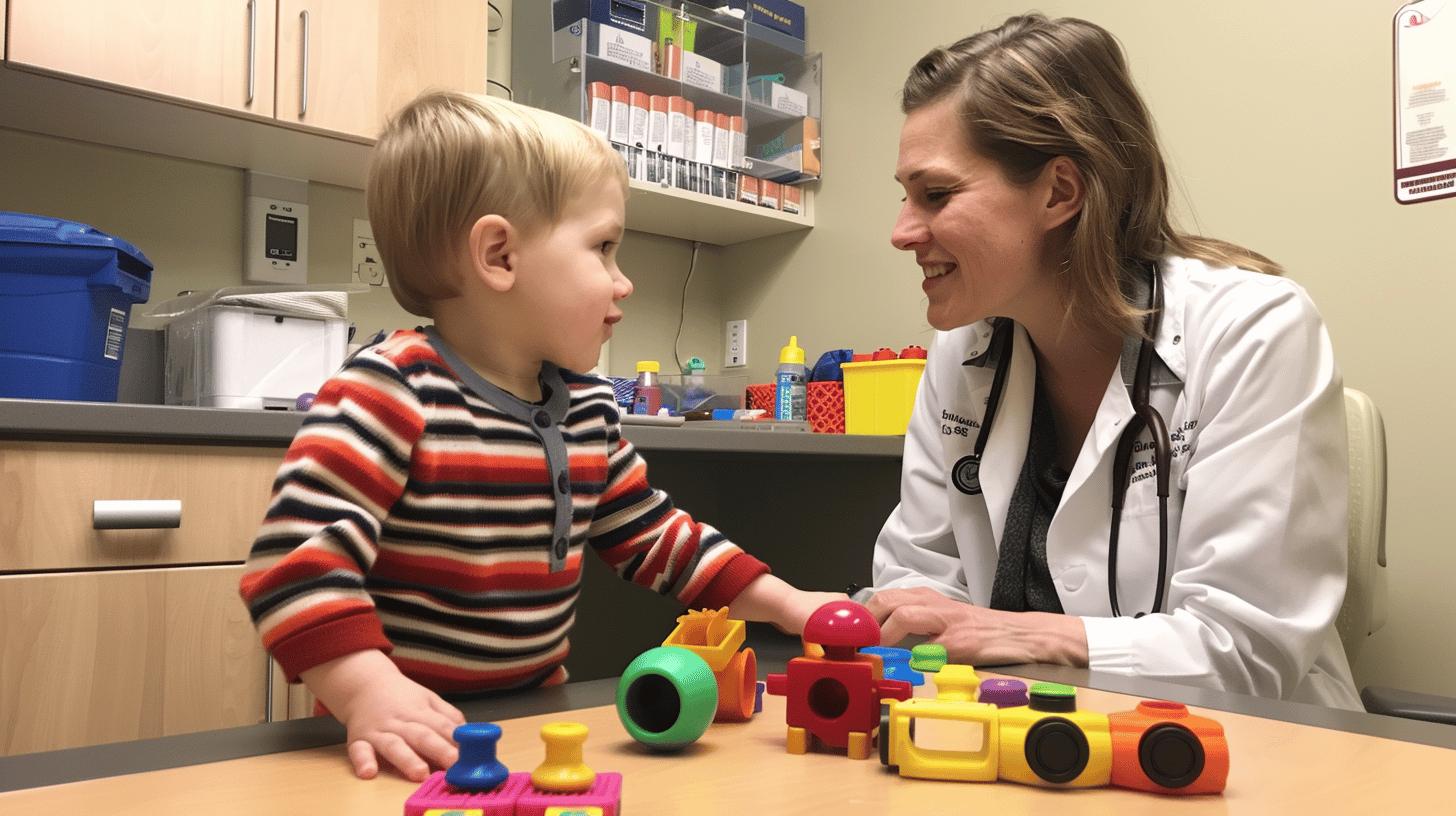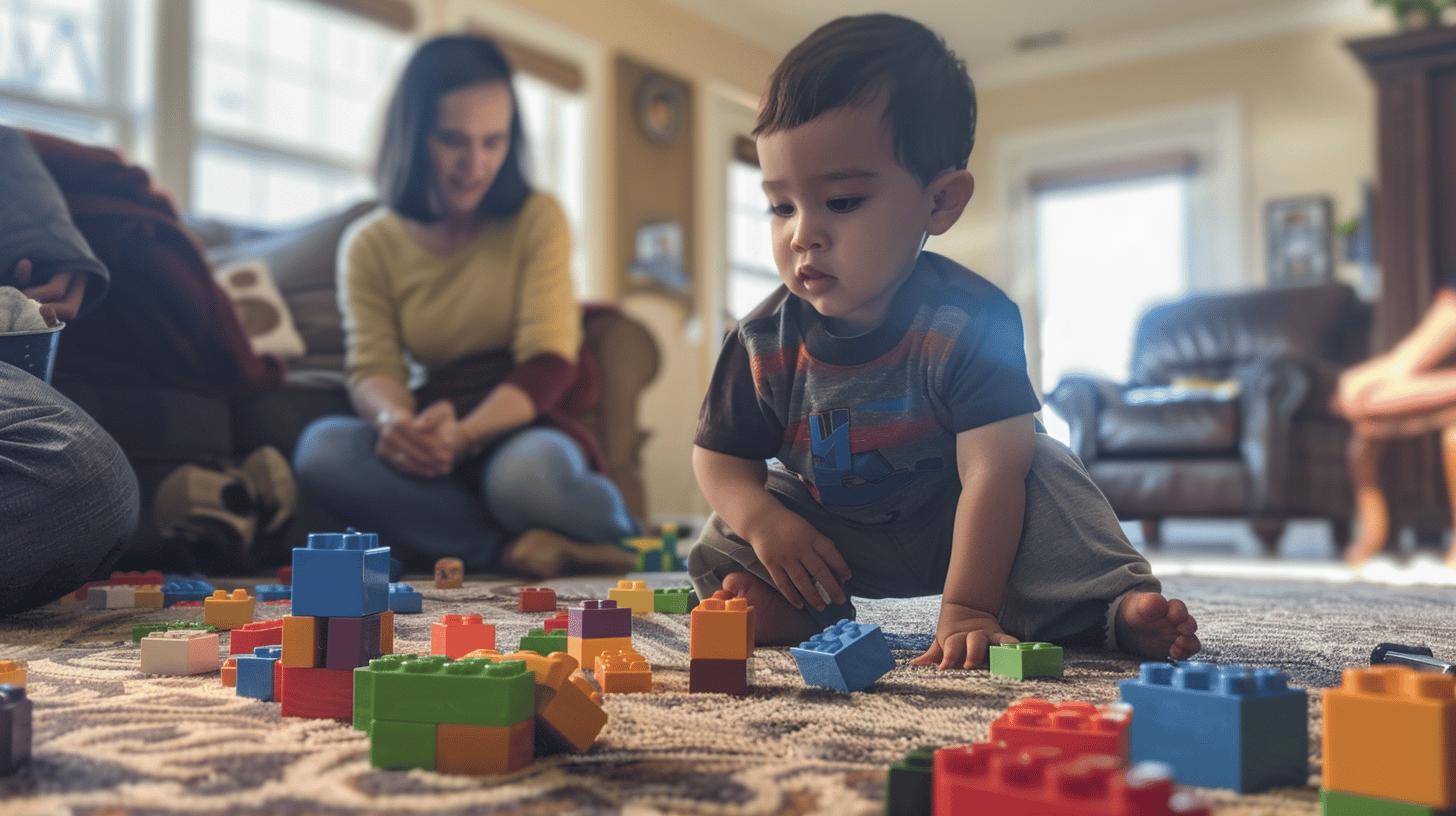Is it possible that your child’s developmental delays signify something more? Understanding the nuances between Autism Spectrum Disorder (ASD) and Global Developmental Delay (GDD) is vital for every parent navigating these challenges. These conditions, while often sharing certain symptoms, have distinct characteristics and impacts. In this article, we’ll dive into key insights and differences between Autism and Global Developmental Delay, helping you make informed decisions and seek the appropriate interventions for your child’s unique needs.
Understanding Autism and Global Developmental Delay
Global Developmental Delay (GDD) affects about 1-3% of the population in the UK and involves delays across various developmental areas in children. These areas include cognitive, motor, social, and language development. Autism Spectrum Disorder (ASD) is a neurological difference affecting perception, interaction, and communication. Children with ASD exhibit a wide range of symptoms and behaviors, often impacting social interactions and communication.
Common symptoms of each condition include:
Global Developmental Delay (GDD)
- Delays in reaching developmental milestones
- Difficulty with motor skills, such as walking or grasping objects
- Challenges in learning new skills
- Limited social interaction
- Speech and language delays
Autism Spectrum Disorder (ASD)
- Difficulty in social communication
- Repetitive behaviors and routines
- Sensory sensitivities
- Challenges in understanding social cues
- Delayed speech and language development
Both GDD and Autism share certain signs and symptoms but are distinct conditions. GDD is a broad term encompassing delays in multiple developmental areas, whereas Autism specifically affects social communication and interaction. Understanding these differences is essential for accurate diagnosis and tailored intervention. Early identification and support can significantly improve outcomes for children with either condition.
Diagnostic Criteria for Autism and Global Developmental Delay

Early diagnosis of Autism Spectrum Disorder (ASD) is essential for creating effective care plans. The diagnostic process involves multiple steps and is typically conducted by developmental and behavioral pediatricians. These professionals will assess the child’s medical history, observe behaviors, and evaluate developmental milestones. Tools like the Autism Diagnostic Observation Schedule (ADOS) and the Autism Diagnostic Interview-Revised (ADI-R) are often used. These assessments focus on social communication, repetitive behaviors, and sensory sensitivities to determine if a child meets the diagnostic criteria for ASD.
Global Developmental Delay (GDD) diagnosis follows a different process. This condition is generally identified in children between the ages of 1-3. Pediatricians and specialists will assess developmental milestones, such as walking, talking, and social interactions. Parents often notice delays in these areas, prompting further evaluation. Medical history, physical exams, and developmental screenings are used to diagnose GDD. These assessments focus on delays across multiple developmental domains, including cognitive, motor, and language skills.
| Criteria | Autism Spectrum Disorder (ASD) | Global Developmental Delay (GDD) |
|---|---|---|
| Age of Diagnosis | Typically 2-4 years | Typically 1-3 years |
| Key Assessments | ADOS, ADI-R | Developmental screenings |
| Focus Areas | Social communication, repetitive behaviors, sensory sensitivities | Cognitive, motor, language skills |
| Diagnostic Professionals | Developmental and behavioral pediatricians | Pediatricians, developmental specialists |
Key Differences Between Autism and Global Developmental Delay
Autism Spectrum Disorder (ASD) is a specific neurological difference characterized by defined symptoms. These symptoms include difficulties in social communication, repetitive behaviors, and sensory sensitivities. In contrast, Global Developmental Delay (GDD) is a broader term that encompasses various delays in multiple developmental areas, such as cognitive and motor skills. While autism is primarily focused on social interaction and communication challenges, GDD affects a child's overall developmental pace.
ASD and GDD impact development in distinct ways. Autism mainly disrupts social communication, making it hard for individuals to understand social cues and engage in typical social interactions. On the other hand, GDD affects a wider range of developmental domains, including cognitive functions, motor skills, and language abilities. Children with GDD may show delays in walking, talking, and problem-solving tasks, whereas children with autism may exhibit specific behaviors like hand-flapping or strict adherence to routines.
Understanding these distinctions is crucial for accurate diagnosis and effective treatment. A precise diagnosis helps in formulating personalized intervention plans tailored to a child's specific needs. For instance, a child diagnosed with autism might benefit more from therapies focused on social skills and communication, whereas a child with GDD might require a broader range of interventions targeting multiple developmental areas. Correctly identifying whether a child has autism or GDD ensures they receive the appropriate support and resources for optimal development.
Overlapping Features and Shared Challenges

Autism Spectrum Disorder (ASD) and Global Developmental Delay (GDD) share several overlapping features, which can complicate diagnosis and intervention strategies. Both conditions can present with delays in speech and language development, making it difficult to discern whether a child has autism, GDD, or both. Social interaction challenges are another commonality, with children struggling to engage with peers and caregivers. Additionally, repetitive behaviors and sensory sensitivities can be observed in both ASD and GDD. These shared features highlight the necessity for thorough and precise evaluations by medical professionals.
Shared Challenges:
- Difficulty in social interactions
- Speech and language delays
- Repetitive behaviors
- Sensory sensitivities
- Challenges in learning new skills
Understanding these shared challenges underscores the importance of accurate diagnosis. With 62% of children with GDD also having ASD, it is crucial to distinguish between the two conditions to provide effective interventions. An accurate diagnosis ensures that tailored support plans can be developed, addressing the unique needs of each child and optimizing their developmental outcomes.
Treatment and Intervention Options
Treatment options for Autism Spectrum Disorder (ASD) are diverse and tailored to individual needs. Early intervention is crucial and can greatly enhance communication and cognitive skills. Applied Behavior Analysis (ABA) is one of the most effective strategies, focusing on improving specific behaviors such as social skills, communication, and academics. Speech and language therapy helps children develop effective communication skills, while occupational therapy addresses sensory processing issues and enhances daily living skills. Additionally, social skills training provides opportunities for children to learn and practice social interactions in a controlled environment. These therapies are often combined to create a comprehensive, individualized treatment plan.
Intervention strategies for Global Developmental Delay (GDD) focus on addressing delays across multiple developmental domains. Early intervention services play a vital role, providing support as soon as delays are identified. Physical therapy helps improve motor skills, such as walking and coordination. Speech and language therapy is essential for overcoming communication challenges. Cognitive-behavioral therapy (CBT) can assist in developing problem-solving skills and managing behavioral issues. Homecare services, like those offered by Leaf Complex Care, provide personalized support in a familiar setting, which can enhance mental well-being. These interventions are designed to support children in reaching their developmental milestones.
Early Intervention Benefits:
- Improved communication skills
- Enhanced cognitive development
- Better social interactions
- Increased independence
- Reduced behavioral issues
- Greater overall development
Real-life Case Studies and Expert Opinions

One compelling case study of Global Developmental Delay (GDD) involves a child named Sarah, diagnosed at age two. Sarah exhibited significant delays in motor skills and speech. Early intervention services were initiated, including physical and speech therapy. Over two years, Sarah's motor skills improved, allowing her to walk independently. Her speech therapy sessions focused on developing basic communication skills, resulting in markedly enhanced social interactions. This case underscores the importance of early and targeted interventions, demonstrating that children with GDD can make significant progress with the right support.
A notable case study for Autism Spectrum Disorder (ASD) features a boy named Michael, diagnosed at age three. Michael struggled with social communication and displayed repetitive behaviors. His tailored treatment plan included Applied Behavior Analysis (ABA), speech therapy, and occupational therapy. ABA sessions helped Michael reduce repetitive behaviors and improve social skills. Speech therapy focused on enhancing his language abilities, while occupational therapy addressed sensory sensitivities. Michael's progress was remarkable, highlighting how a comprehensive, individualized approach can substantially benefit children with autism.
Expert-Recommended Strategies for Managing GDD and ASD:
- Early intervention services
- Tailored therapy plans
- Consistent routine and structure
- Parental involvement and training
- Regular progress monitoring
These strategies emphasize the importance of early diagnosis, personalized care plans, and ongoing support. Experts agree that a multidisciplinary approach, involving various therapies and active parental participation, can lead to significant improvements in children with GDD and ASD.
Final Words
Understanding autism and global developmental delay is crucial for early and effective intervention. Diagnostic criteria for both conditions help in setting up customized care plans. While they share some overlapping features, key differences are essential for accurate diagnosis and treatment.
Recognizing the prevalence and impact of autism and GDD allows for better-informed parenting and medical support. Accurate diagnosis, early intervention, and expert strategies can significantly improve the quality of life for children with autism and global developmental delay. Embracing these insights fosters hope and progress.
FAQ
Can a child outgrow global developmental delay?
A: Some children with GDD can show improvement with early intervention and support. However, the extent of improvement varies and many may continue to need support throughout their lives.
Is GDD curable?
A: GDD is not curable, but early intervention can significantly improve outcome. Supportive therapies and individualized care plans can help manage developmental delays effectively.
Is GDD a disability?
A: Yes, GDD is considered a disability. It involves significant delays in cognitive, motor, and social development that can affect a child's daily functioning.
Can a child with GDD live a normal life?
A: With early intervention and continuous support, many children with GDD can achieve a good quality of life and participate in everyday activities to varying degrees.
What are global developmental delay symptoms?
A: Symptoms may include delays in speech and language, motor skills, social interactions, and cognitive development. Each child may exhibit different signs varying in severity.
What is the difference between developmental delay and autism in toddlers?
A: Developmental delay involves delays in multiple areas, whereas autism specifically affects social and communication skills. Autism has distinct behaviors such as repetitive actions.
Can autism cause developmental delays?
A: Yes, autism can lead to developmental delays, particularly in areas related to social interaction, communication, and sometimes motor skills.
How to tell the difference between developmental delay and autism?
A: Developmental delay generally affects multiple areas of development, while autism specifically impacts social and communication skills, often accompanied by specific behavioral traits.
Can a child outgrow GDD vs autism?
A: While children can show improvement with early intervention, GDD and autism typically require ongoing support and management throughout life. The extent varies by individual.
How is global developmental delay diagnosed?
A: GDD is diagnosed through assessments of medical history, developmental milestones, and comprehensive evaluations by developmental and behavioral pediatricians, typically between ages 1-3.
What are the key differences between GDD and autism?
A: GDD affects cognitive and motor skills broadly, while autism impacts social communication and behavior patterns. Autism is a specific neurological condition, GDD is a broader term.
What is the life expectancy with global developmental delay?
A: Life expectancy for individuals with GDD varies widely based on the underlying cause and the level of care and support they receive.


